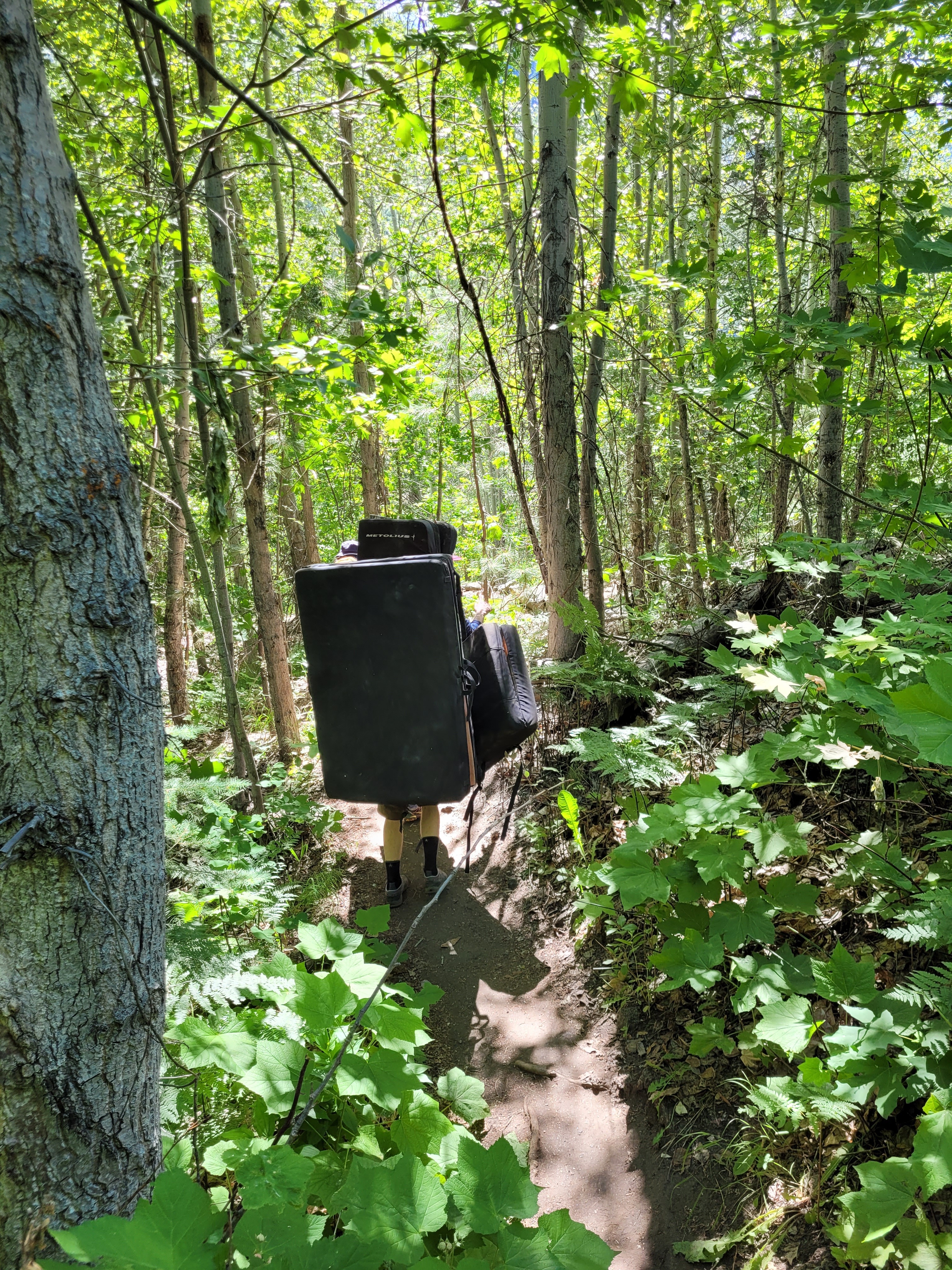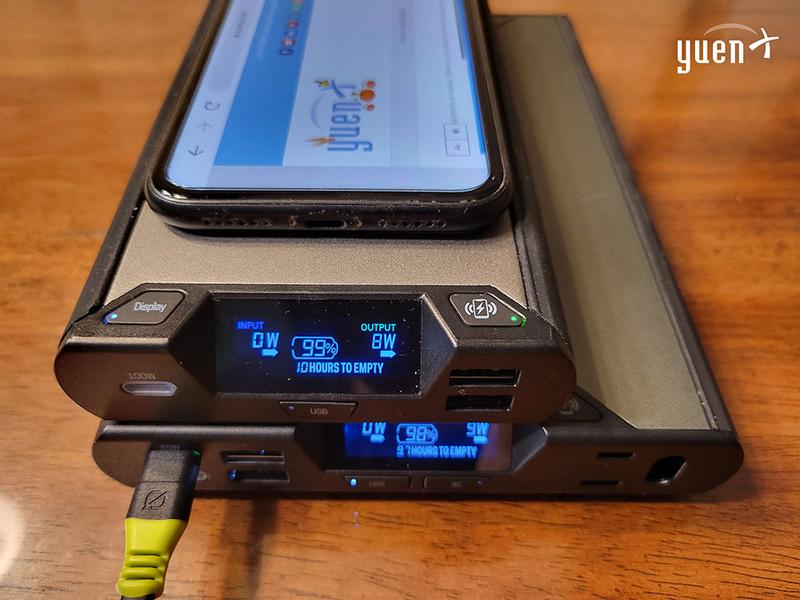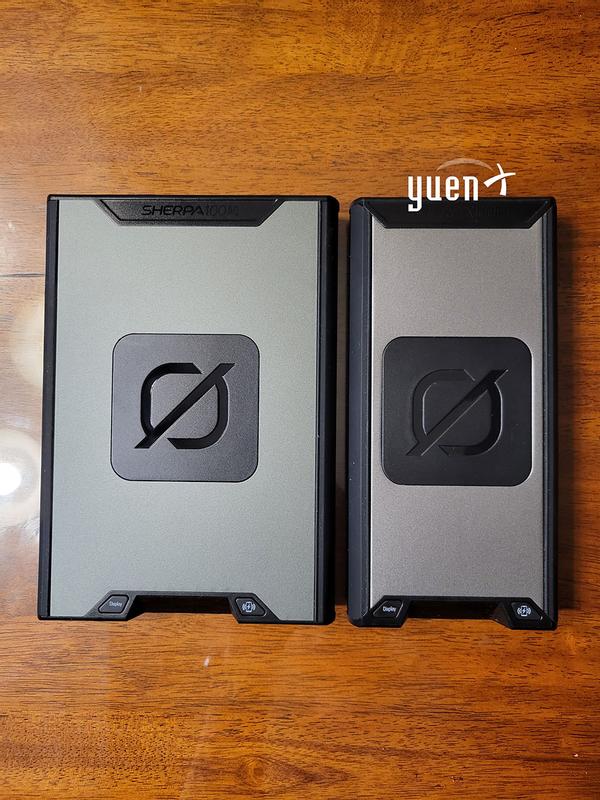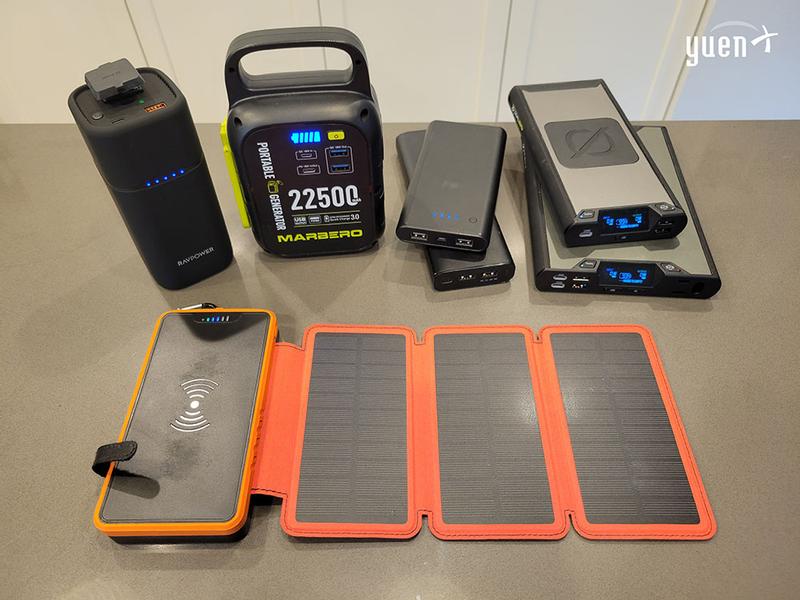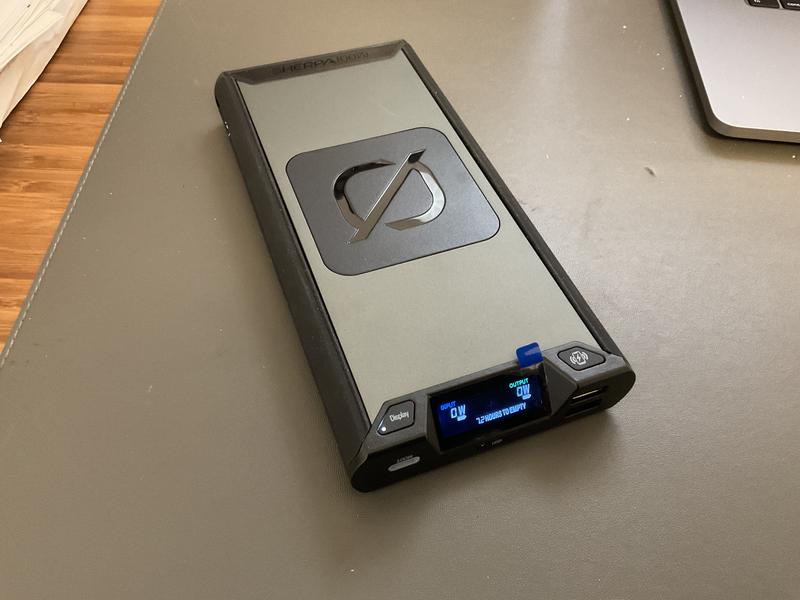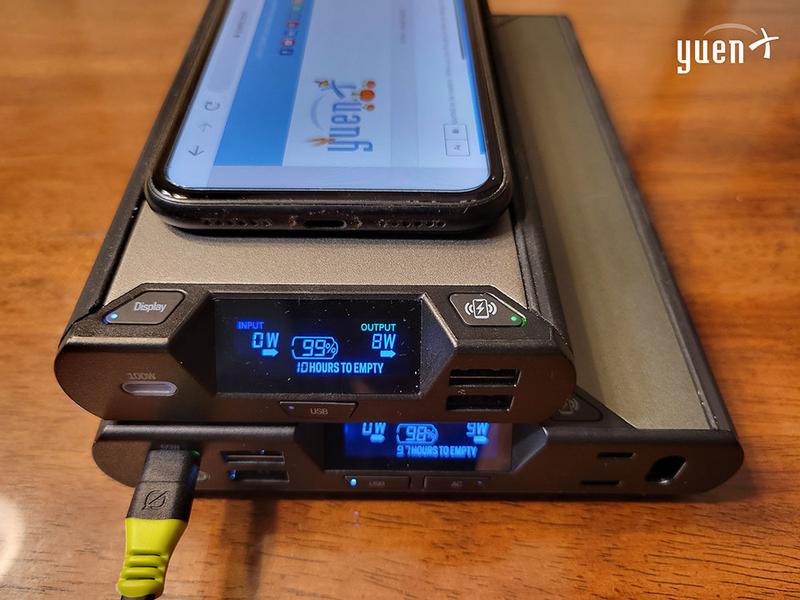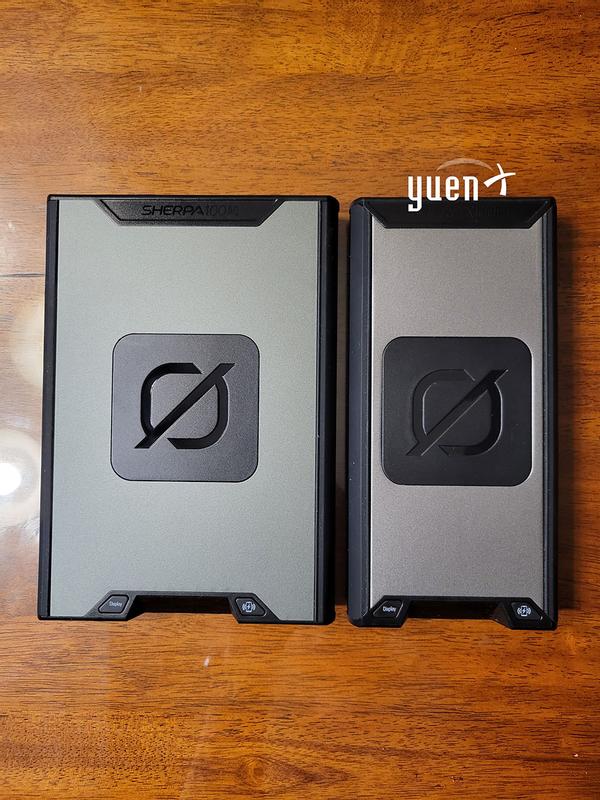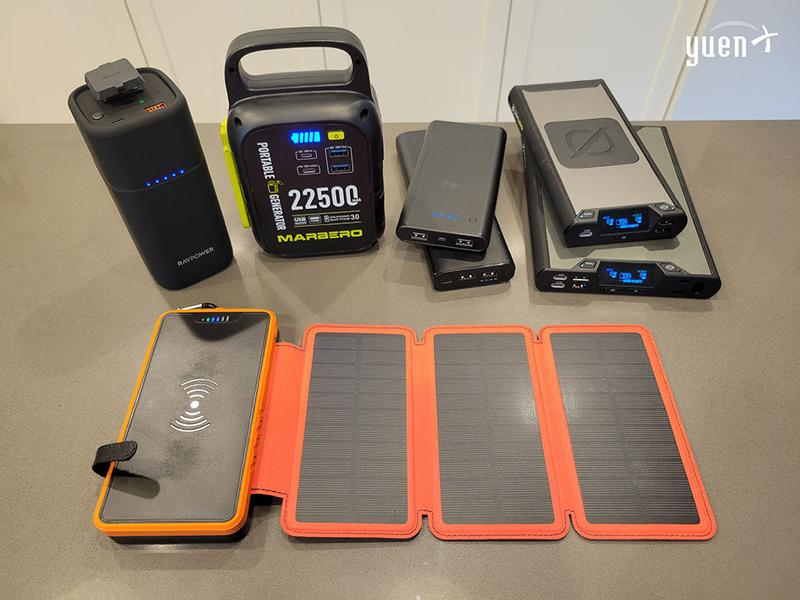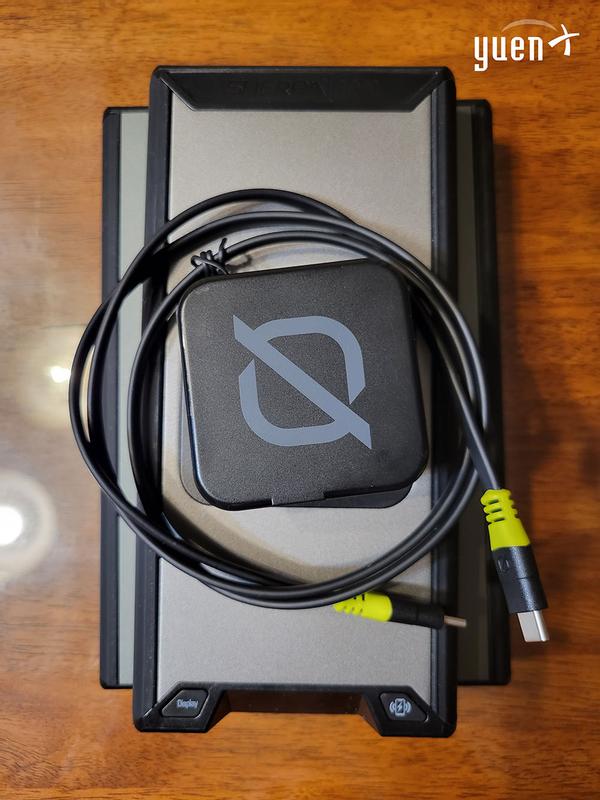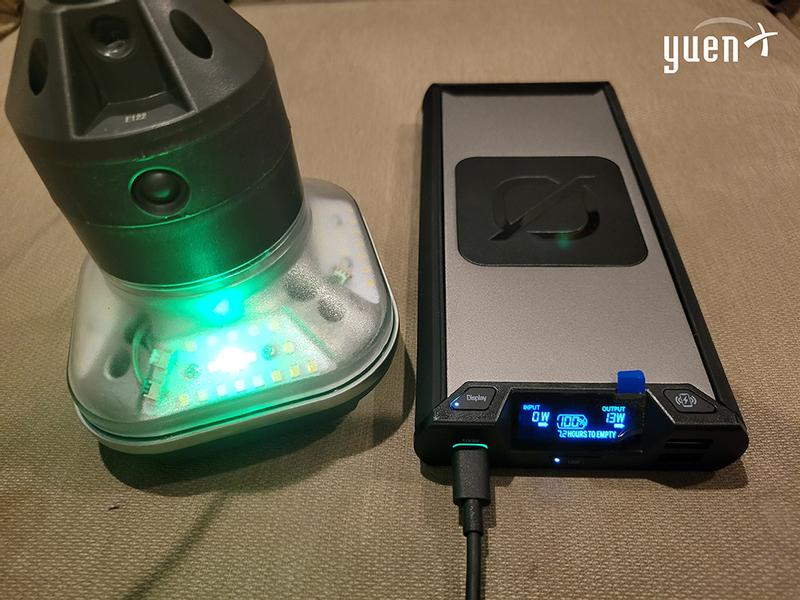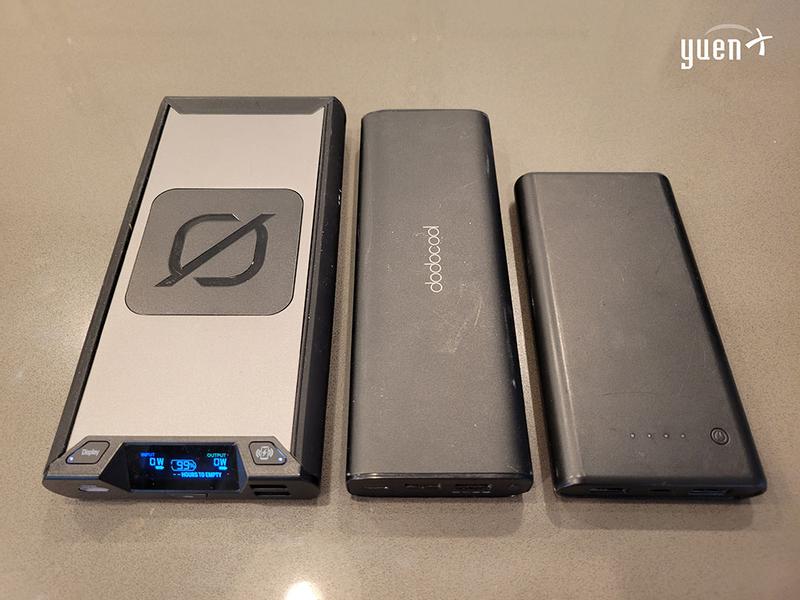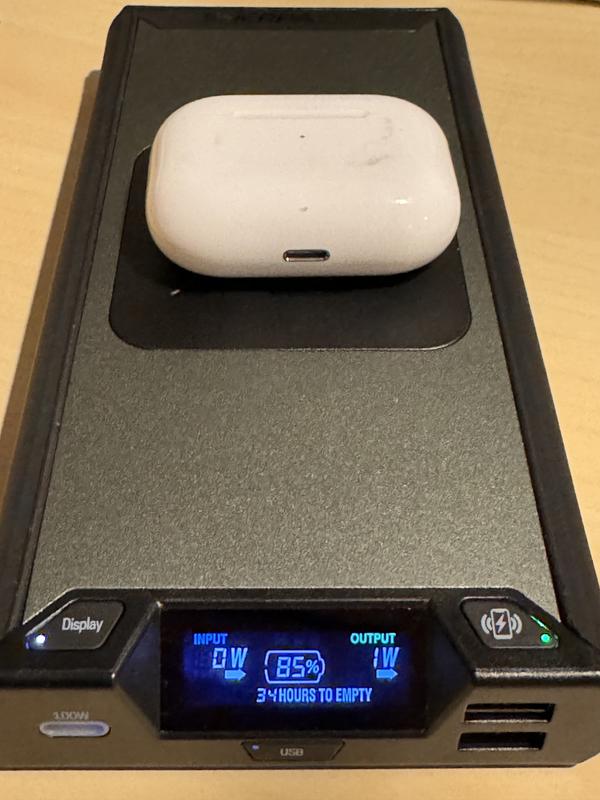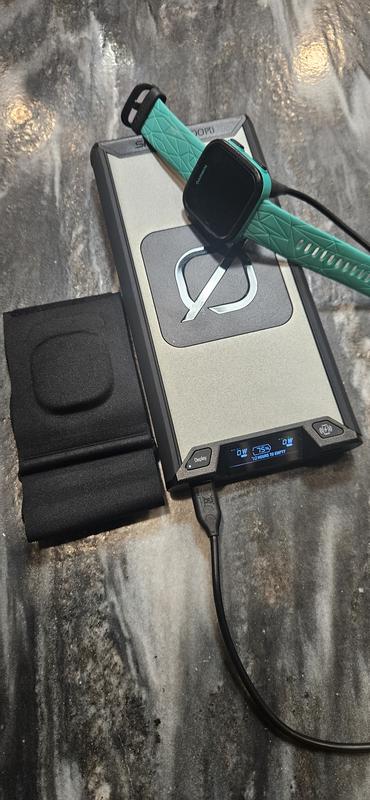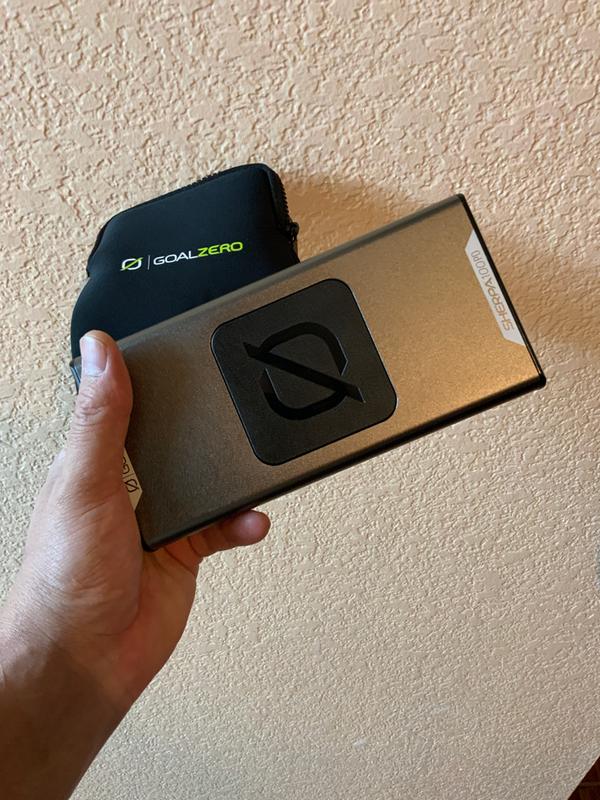Goal Zero Sherpa 100PD Power Bank
Whether you're traveling or working remote, the Goal Zero Sherpa 100PD power bank is there to keep your phone, tablet or laptop charged with 60% faster USB-C charging and 15W wireless charging.
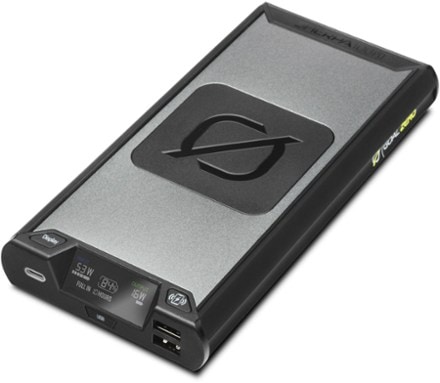



This purchase pays for membership!
$17
10% Reward
on this and every eligible full-price item*
+
$30
Bonus Card
valid for 30 days after joining*
=
$47
Value
Keep shopping
- Provides up to 95 Wh of power
- Power goes in at 60W and out at 100W via USB-C for 60% faster device charging compared to previous models, making it easy to keep your essentials charged
- Up to 15W wireless charging that's 3x faster than previous models helps you keep your phone juiced up on the go with enough battery life to carry you through the day
- Color LCD display is easy to operate and makes viewing critical power stats simple
- Aluminum unibody construction is durable and built to last through all of your adventures and travels
- Includes a 2-year warranty for additional peace of mind; see manufacturer's website for details
- Box includes Sherpa 100PD power bank and a 39 in. USB-C to USB-C cable
- 65-watt USB-C charger (not included) can recharge from a USB source in 2 hrs; fully recharge from the wall in about 3 hrs. using the 45-watt USB-C charger (not included).
- The Goal Zero Nomad 20 solar panel (not included) will fully recharge the Sherpa 100PD in about 8–16 hrs. (can only be solar charged using the USB port on Nomad solar panels)
- Can also plug into your vehicle's USB-A outlet or you can use a USB-C car charger
Imported.
View the Goal Zero Sherpa Product LineView all Goal Zero Power Banks| Best Use | Backpacking |
|---|---|
| Charge Time (hrs) | 2 (via USB)/15-30 (via solar) hours |
| External Charge | Car / USB / Wall |
| Battery Included | Yes |
| Battery Type | Lithium Ion |
| Battery Capacity (Wh) | 94.7 watt hours |
| Battery Storage Capacity (mAh) | 25600 milliamp hours |
| Power Output to Device | USB-A x2: 5V 2.4A (12W max)/USB-C PD 1 Port: 5V, 9V, 12V, 20V, 3A (60W max)/USB-C PD 2 Port: 5V, 9V, 12V, 20V, 5A (100W max)/Wireless: 15W max |
| Material(s) | Aluminum/ABS Plastic/Rubber |
| Dimensions | 7.69 x 3.81 x 1.02 inches |
| Weight | 1 lb. 8 oz. |
| Solar Compatible | Yes |
Write a Review
Adding a review will require a valid email for verification
Customer Images
Most Helpful Favorable Review
Most Helpful Critical Review
Solid power bank in a sturdy package, but pricey
The Sherpa saved me a few weekends ago while camping at ice-covered Yosemite. Temperatures had dipped to below freezing at night, and throughout the day and evening, my Samsung Galaxy S21+ phone kept complaining of moisture. The well-meaning feature tries to minimize phone damage from potential exposure to condensation while charging, but it sometimes gets it wrong like it did during that entire trip. A dead phone would have meant the end of taking pictures and videos of my son, friends, and the beautiful winter landscape. I had an Anker power bank with me, but charging through USB was no longer an option with my phone. Sherpa's built-in, 15W wireless charging saved the day by getting the phone filled up quickly within the limited amount of time we spent around camp. Hardly any other 100Wh power bank I used charged this fast wirelessly. Externally, the Sherpa 100PD is rugged and well-built for the outdoors where dependability is a requirement for me. It is worth noting that Goal Zero provides a 2-year warranty. One of my favorite features is the color LCD showing, like its Yeti X power stations, the amount of energy going in and/or out and how much time is remaining to full or empty, respectively. Do note that wireless charging is a huge battery waster due to energy conversion -- use wired USB whenever possible for the best efficiency and to get the most charge out of the Sherpa. How much energy a battery can store is measured in Wh (Watt-hours), and how much power is used or produced in W (Watts). The Sherpa 100PD has 94.7Wh (equivalent to 25,600mAh @ 3.7V). If a USB light bulb uses 5W per hour, it could be continuously used up to 18.9 hours (94.7Wh / 5W). Sherpa's batteries are made with Li-ion NMC. They are more volatile (and potentially dangerous) than Li-ion LiFePO4 -- but that is not as much of a concern at the lower 100Wh capacity. NMC lose 20-25% capacity after every 500 charging cycle and could theoretically last 6-10 years with diminishing capacity over time. NMC batteries are smaller, lighter, and more expensive to manufacture than LiFePO4. For air travel, airlines have different policies for what battery capacity you can bring on board. TSA and FAA both allow up to 100Wh and, with airline approval, up to 2 power banks of 100Wh max each. The Sherpa's 94.7Wh fits well within that guideline. United allows 300Wh, Southwest 160Wh, but check with the relevant authorities to be certain before you travel. Sherpa 100PD can both be charged and be used to charge other devices via USB-C. There is an "In/Out/Auto" switch at the back that controls how the USB-C port should operate. By default, it is set to Auto, but sometimes, it can choose the wrong mode. For example, I wanted to have it charge my camping light, but it instead used the light's battery to charge itself. I had to flip the Sherpa's switch to "Out". You may have to do the same when trying to charge a laptop battery. If you wanted to have another battery charge the Sherpa, you would have to switch to "In" ("Auto" may also work). It can be charged via USB-C at up to 60W with a wall charger, solar panel, or car plug. Goal Zero's own car plug can charge at 60W or 120W, depending on your car's capability, and is one of my favorite accessories to charge power stations and battery banks with. Hardly any other manufacturer offers that, and it makes me question why GZ does not promote that excellent product more. It can output up to 100W to a compatible device with the right USB-C cable. Its USB-A ports can go up to a quick-charging 12W. The Sherpa 100PD is a pricey power bank with features that many others, including popular Anker, do not provide. Whether it is worth the price tag depends on how you plan to use it. Its biggest selling points, in my opinion, are ruggedness for the outdoors with fast wireless charging capability and USB-C PD 100W output. The more expensive Sherpa 100AC model has an extra USB-C PD 60W output port, a 100W AC inverter to power devices using an AC plug, and can be solar-charged with its 8mm port. It essentially is a mini power station akin to its Yeti X siblings, but at its current price tag, it makes it difficult to recommend for most users who do not require "power station" functionality in a small form factor.
Solid power bank in a sturdy package, but pricey
The Sherpa saved me a few weekends ago while camping at ice-covered Yosemite. Temperatures had dipped to below freezing at night, and throughout the day and evening, my Samsung Galaxy S21+ phone kept complaining of moisture. The well-meaning feature tries to minimize phone damage from potential exposure to condensation while charging, but it sometimes gets it wrong like it did during that entire trip. A dead phone would have meant the end of taking pictures and videos of my son, friends, and the beautiful winter landscape. I had an Anker power bank with me, but charging through USB was no longer an option with my phone. Sherpa's built-in, 15W wireless charging saved the day by getting the phone filled up quickly within the limited amount of time we spent around camp. Hardly any other 100Wh power bank I used charged this fast wirelessly. Externally, the Sherpa 100PD is rugged and well-built for the outdoors where dependability is a requirement for me. It is worth noting that Goal Zero provides a 2-year warranty. One of my favorite features is the color LCD showing, like its Yeti X power stations, the amount of energy going in and/or out and how much time is remaining to full or empty, respectively. Do note that wireless charging is a huge battery waster due to energy conversion -- use wired USB whenever possible for the best efficiency and to get the most charge out of the Sherpa. How much energy a battery can store is measured in Wh (Watt-hours), and how much power is used or produced in W (Watts). The Sherpa 100PD has 94.7Wh (equivalent to 25,600mAh @ 3.7V). If a USB light bulb uses 5W per hour, it could be continuously used up to 18.9 hours (94.7Wh / 5W). Sherpa's batteries are made with Li-ion NMC. They are more volatile (and potentially dangerous) than Li-ion LiFePO4 -- but that is not as much of a concern at the lower 100Wh capacity. NMC lose 20-25% capacity after every 500 charging cycle and could theoretically last 6-10 years with diminishing capacity over time. NMC batteries are smaller, lighter, and more expensive to manufacture than LiFePO4. For air travel, airlines have different policies for what battery capacity you can bring on board. TSA and FAA both allow up to 100Wh and, with airline approval, up to 2 power banks of 100Wh max each. The Sherpa's 94.7Wh fits well within that guideline. United allows 300Wh, Southwest 160Wh, but check with the relevant authorities to be certain before you travel. Sherpa 100PD can both be charged and be used to charge other devices via USB-C. There is an "In/Out/Auto" switch at the back that controls how the USB-C port should operate. By default, it is set to Auto, but sometimes, it can choose the wrong mode. For example, I wanted to have it charge my camping light, but it instead used the light's battery to charge itself. I had to flip the Sherpa's switch to "Out". You may have to do the same when trying to charge a laptop battery. If you wanted to have another battery charge the Sherpa, you would have to switch to "In" ("Auto" may also work). It can be charged via USB-C at up to 60W with a wall charger, solar panel, or car plug. Goal Zero's own car plug can charge at 60W or 120W, depending on your car's capability, and is one of my favorite accessories to charge power stations and battery banks with. Hardly any other manufacturer offers that, and it makes me question why GZ does not promote that excellent product more. It can output up to 100W to a compatible device with the right USB-C cable. Its USB-A ports can go up to a quick-charging 12W. The Sherpa 100PD is a pricey power bank with features that many others, including popular Anker, do not provide. Whether it is worth the price tag depends on how you plan to use it. Its biggest selling points, in my opinion, are ruggedness for the outdoors with fast wireless charging capability and USB-C PD 100W output. The more expensive Sherpa 100AC model has an extra USB-C PD 60W output port, a 100W AC inverter to power devices using an AC plug, and can be solar-charged with its 8mm port. It essentially is a mini power station akin to its Yeti X siblings, but at its current price tag, it makes it difficult to recommend for most users who do not require "power station" functionality in a small form factor.
Failed Again
I bought the Sherpa 100PD about four months ago for a backpacking trip to Kings Canyon National Park. I started with a Sherpa that was 100% fully charged. I charged my Galaxy S22 phone three times (charging it only 40% each time). On the fifth charge, the Sherpa showed it was 79% full, and once I plugged in my S22 to recharge it, it dropped to 7% charged. Total failure of this product - being in the Kings Canyon backcountry with no power bank to recharge my phone or Garmin InReach. This is the second brand new Sherpa that has done this on me. This exact same thing happened last October in 2023 when I was backpacking in Ansel Adams Wilderness.
Convenient, powerful, awesome powerbank
I have loved the 1st gen Sherpas but love the 2nd gen even more. I love pulling the PD or AC out in a meeting and charging my computer or whatever I have with me at the time without having to fight over outlets or running my cables all over the room. I take it on trips and normally don't fret about boxes just the cables I need, hasn't failed me yet. I love the new display and being able to see all the information how long is left, etc. Even though it's a little bigger/chunkier than other powerbanks I like how it looks and how sturdy it is. Don't think I'd take it backpacking with me but you won't find my EDC backpack without a Sherpa
Wireless Charging is super convenient
I bought this to support my various device while travelling and it’s performed exactly as advertised. One word on convenience: I can put my phone or earbuds on the PD100 for wireless charging. I simply rest my iPhone or AirPod Pro case on the top — it charges seamlessly as I work. Obviously plugging in can be done but this is way better. And, if I need to power up 2 devices at the same time, I can use short USB cord from the PD100 to the second device which can move around with me, unlike a hardwired cord to mains adaptor.
Very Portable Power
I bought this for a six day sailing trip where I would not have access to power, so I could recharge my iPhone 14 Pro, Apple Watch, and GoPro. I ran the GoPro down early in the trip when it was left on accidentally, so I had to recharge that once more than I expected. I was able to keep all three completely recharged until the last night of the trip when it was down to 7%. I charged the phone on another power pack, and charged the phone and GoPro one last time on the Sherpa. I was very pleased with the capacity, and liked the display, although it is hard to read in bright sunlight.
good but an annoying flaw, maybe deal-breaker
this is a nice power bank in most aspects but the wireless charging has an annoying, and possibly serious flaw. if your phone isn't positioned exactly correctly, it will drain the power bank as it tries to keep reconnecting to the phone. if you never use the wireless charger this isn't a problem but imo it shouldn't drain the bank. it should just not charge the phone...
Device stopped working after 30 days!
Great device, but the reliability is questionable. My device was less than a month old and died. I bought it in Portland, OR but live in The Netherlands, which makes the warranty very difficult and expensive to deal with as Goal Zero insists that I send it back to the US, even though the product is sold in Europe?
Two defective units so far.
I bought the first unit a couple of months ago and the first thing I noticed was that the round plastic seals on the side of the package seemed to have another set underneath which I thought I was getting a returned or previously used unit. I used it a couple of times to keep my MacBook Pro charged but mostly to power my iPhone 14 and apple speaker outside. Everything was OK for the first month when I noticed that it wasńt accepting charge from my MacBook Pro charger (60W). I had to wait about a day then the unit will accept charging. That problem became more frequent to the point that it took a couple of days before the unit would accept charging. Then around the 7 week of use the unit started getting very hot and did not powered at all. The USB-C port turned green for the first time and in spite of not being used at that point it remained hot even like 4 hrs later when I decided to return it. I got a replacement suit to take advantage of the 20% off I had used to buy it but the replacement unit also had the double sticker and ended-up with similar problems a couple of days later. Discharged from 100% to 0% after 1 hr of powering the small apple speaker and not accepting charge. I’m returning it again. I probably had a capo up le of bad items that were returned and re-packaged as good.
Charges devices quickly, but a bit annoying
The function of this device is pretty simple - charge my electronic devices. However it often takes multiple tries plugging / unplugging my iphone, ear buds, etc to get the charging to 'take'. Really the last thing I want to spend time messing around with esp when I'm in a a dark tent just trying to go to bed. I have an older, similar model from GZ that never was a hassle in this regard and I'd give 4 stars. Anyways, I'm thinking of returning this one


